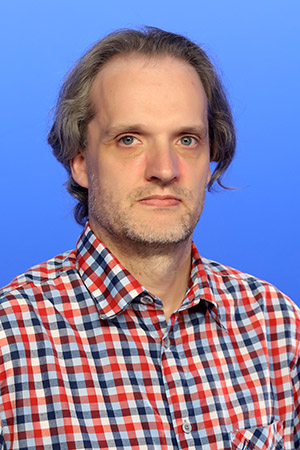
Ph.D.
Professor, Principal Investigator
Laboratory of Phylogenetic Combinatorics
Email: stefan@sinh.ac.cn
Research Areas
Phylogenetics
Developing methods to reconstruct phylogenetic networks
Combinatorics and graph theory
Applications of phylogenetic methods within and outside phylogenetics
The main research area of the group is phylogenetics. We develop methods to reconstruct phylogenetic trees or networks, with an emphasis on displaying ambiguity in the data and reticulate evolution. The structures that we would like to construct from biological data can often be described in combinatorial terms. For example, an unrooted phylogenetic network can be considered as a collection of bipartitions (splits) of the taxa set and a rooted phylogenetic network is an acyclic directed graph. Compared with the combinatorics of trees, there are many open problems for more general networks. We work on those combinatorial problems and the results are published in mathematical journals. They often have algorithmic consequences and give rise to new methods or insights in the performance or limitations of existing methods. We implement our new algorithms and collaborate with biologists to analyze their data, comparing the results of different phylogenetic methods.
There are many more problems in molecular biology where phylogenetic methods or similar combinatorial techniques can be applied. Thus, in addition to working on "proper" phylogenetic analysis, we have worked on the analysis and alignment of biological networks such as protein-protein interaction networks or gene regulatory networks, and our current work on the quartet distance between phylogenetic trees gives rise to a new measure of dependence between random variables or data sets.
Brief Biography
Professional Experience
2006.09 – present: Professor, Principal Investigator, CAS-MPG Partner institute for Computational Biology (PICB), CAS
2005.09 – 2006.08: Combined Postdoc, Linnaeus Center for Bioinformatics, Uppsala University in Uppsala, Sweden, and the University of Canterbury in Christchurch, New Zealand
2001.04 – 2003.03: Postdoc, Graduate College “Bioinformatics” and Department of Mathematics, University of Bielefeld, Bielefeld, Germany
Education
1998.04 – 2001.02: Ph.D. in Mathematics, Department of Mathematics, University of Bielefeld
1994.02 – 1998.03: Diploma in Mathematics, Department of Mathematics, University of Bielefeld
1991.10 – 1994.01: Vordiplom (B.Sc. equivalent) in Mathematics, Department of Mathematics, University of Bielefeld
Selected Publications (*Corresponding Author)
- Huang Y#, Li D#, Qiao L, Liu Y, Peng Q, Wu S, Zhang M, Yang Y, Tan J, Xu S, Jin L, Wang S*, Tang K*, Grünewald S*. A genome-wide association study of facial morphology identifies novel genetic loci in Han Chinese. J Genet Genomics 2021 Mar 20;48(3):198-207
- Gong W, Wan L, Lu W, Ma L, Cheng F, Cheng W, Grünewald S, Feng J*. Statistical testing and power analysis for brain-wide association study. Med Image Anal 2018 Jul;47:15-30
- Grünewald S, Long Y*, Wu Y. Reconstructing Unrooted Phylogenetic Trees from Symbolic Ternary Metrics. Bull Math Biol 2018 Jun;80(6):1563-1577
- He Z#, Han D#, Efimova O, Guijarro P, Yu Q, Oleksiak A, Jiang S, Anokhin K, Velichkovsky B, Grünewald S, Khaitovich P*. Comprehensive transcriptome analysis of neocortical layers in humans, chimpanzees and macaques. Nat Neurosci 2017 Jun;20(6):886-895
- Wolf S, Grünewald S*. Sequence, structure and ligand binding evolution of rhodopsin-like G protein-coupled receptors: a crystal structure-based phylogenetic analysis. PLoS One 2015 Apr 16;10(4):e0123533
- Yang JL, Grünewald S, Xu YF, Wan XF*. Quartet-based methods to reconstruct phylogenetic networks. BMC Syst Biol 2014 Feb 20;8:21
- Yang JL, Li J, Grünewald S*, Wan XF*. BinAligner: a heuristic method to align biological networks. BMC Bioinformatics 2013;14(Suppl 14):S8
- Yang JL, Grünewald S, Wan XF*. Quartet-net: a quartet-based method to reconstruct phylogenetic networks. Mol Biol Evol 2013 May;30(5):1206-1217
- Grünewald S*, Spillner A, Bastkowski S, Bögershausen A, Moulton V. SuperQ: computing supernetworks from quartets. IEEE/ACM Trans Comput Biol Bioinform 2013 Jan-Feb;10(1):151-160
- Li J, Roebuck P, Grünewald S, Liang H*. SurvNet: a web server for identifying network-based biomarkers that most correlate with patient survival data. Nucleic Acids Res 2012 Jul;40(Web Server issue):W123-W126
- Grünewald S, Koolen J, Moulton V, Wu T*. The size of 3-compatible, weakly compatible split systems. J Appl Math Comput 2012 Oct;40(1-2):249-259
- Grünewald S*. Slim sets of binary trees. J Comb Theory A 2012 Feb;119(2):323-330
- Yang J, Li J, Dong L, Grünewald S. A heuristic algorithm to align protein interaction networks. J Biomath 2011;26(3):569-575
- Ding Y, Grünewald S, Humphries J. On agreement forests. J Comb Theory A 2011;118(7):2059-2065
- Yang J, Li J, Dong L, Grünewald S. Analysis on the reconstruction accuracy of the Fitch method for inferring ancestral states. BMC Bioinformatics 2011 Jan 13;12:18


